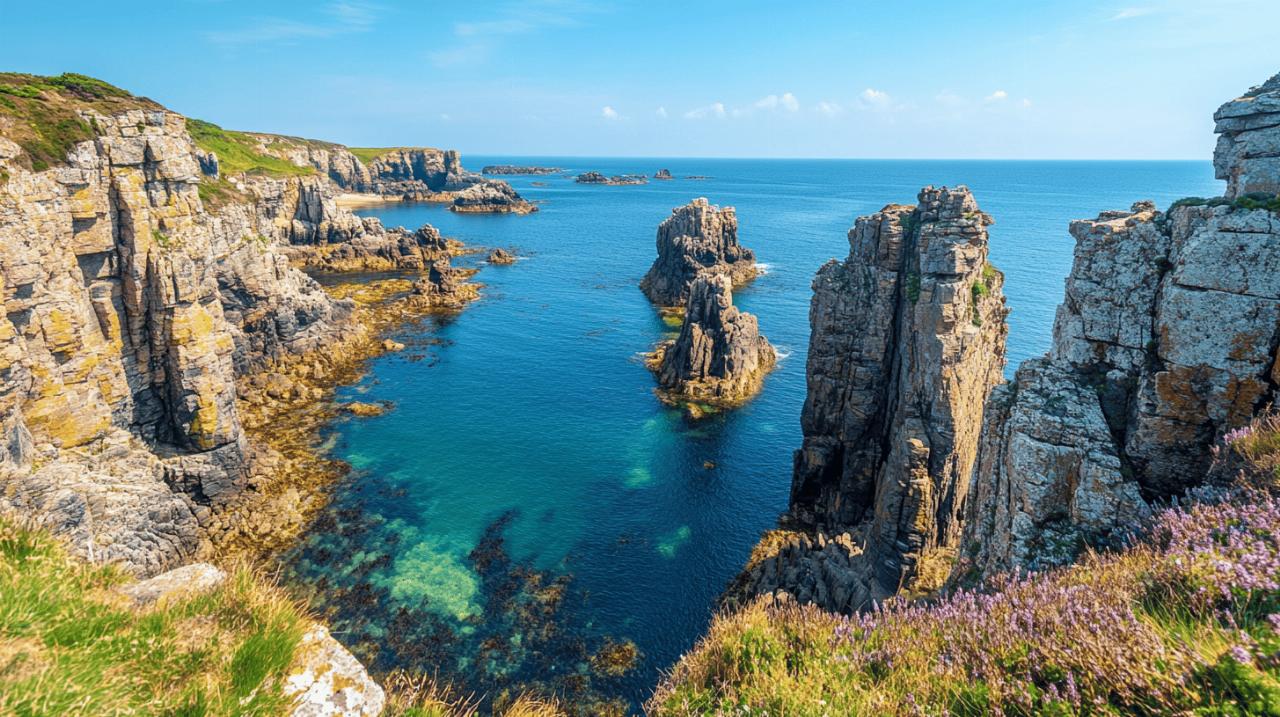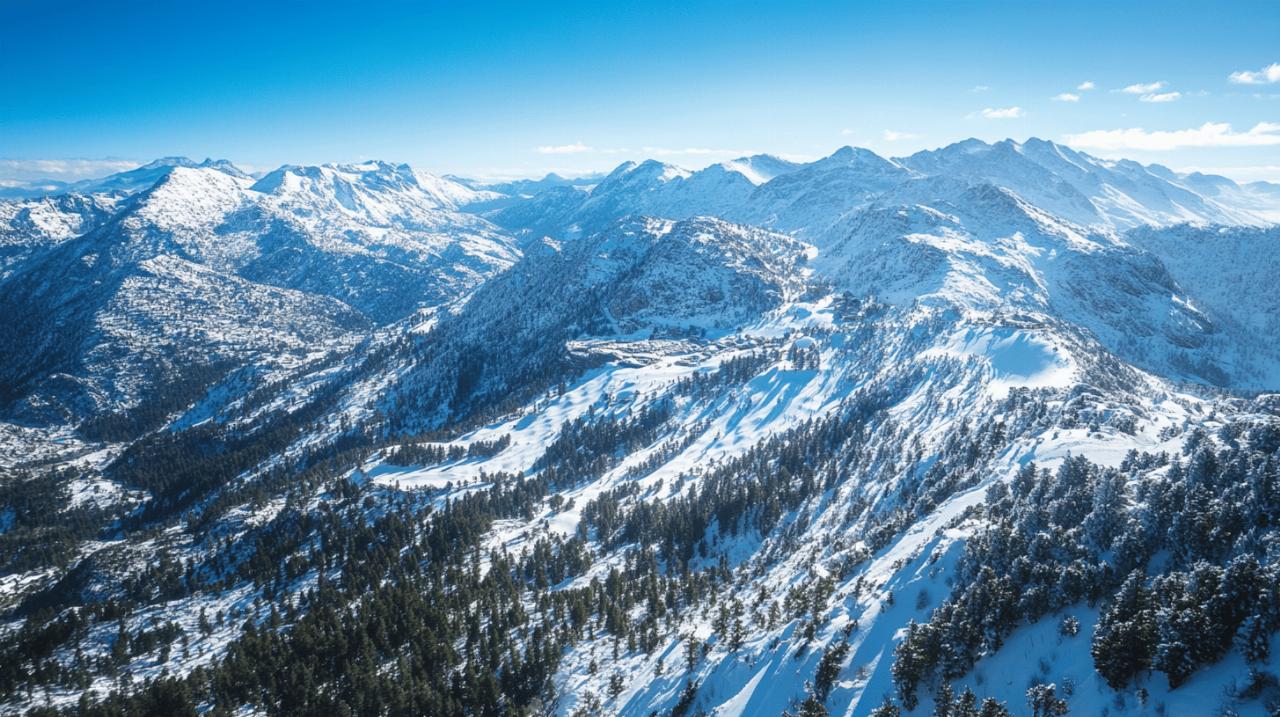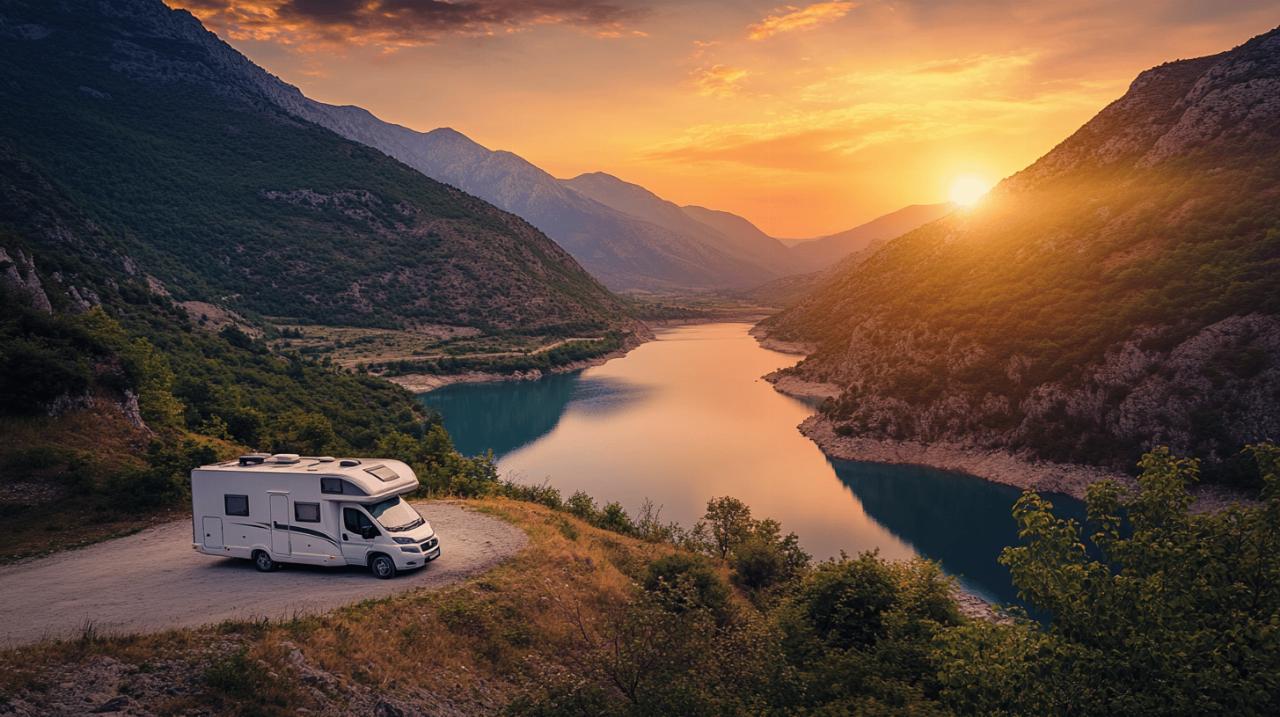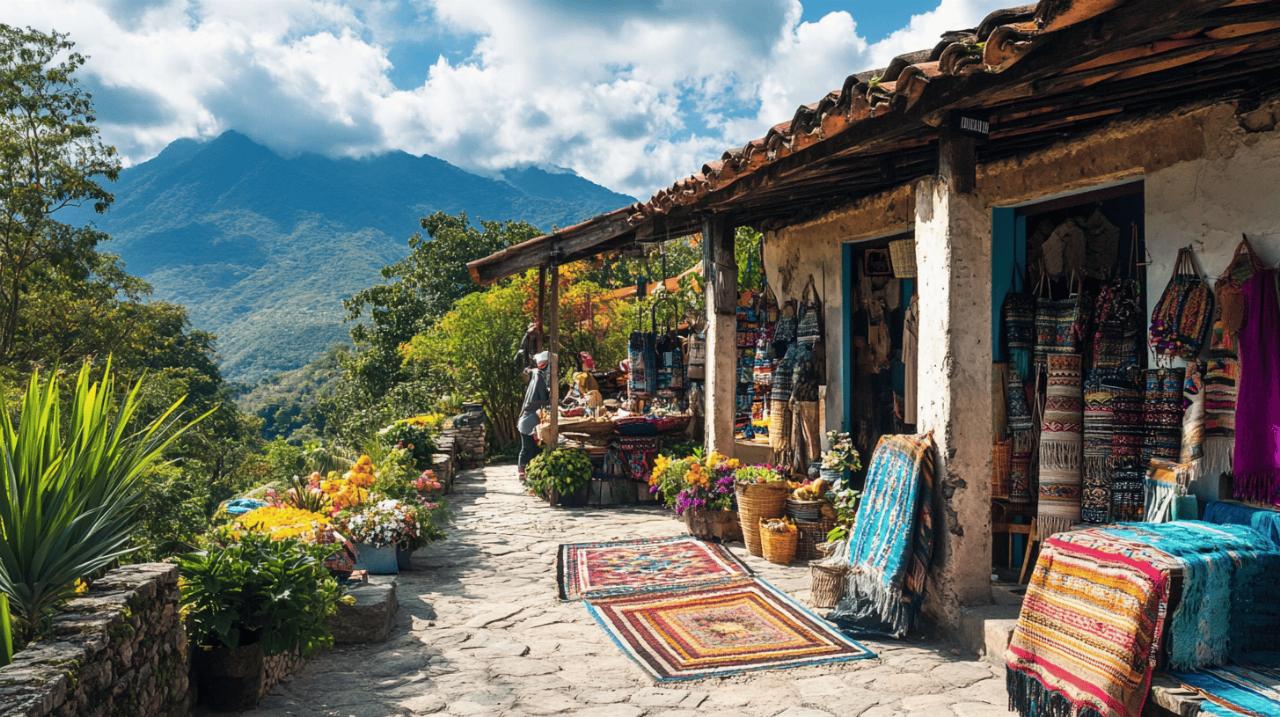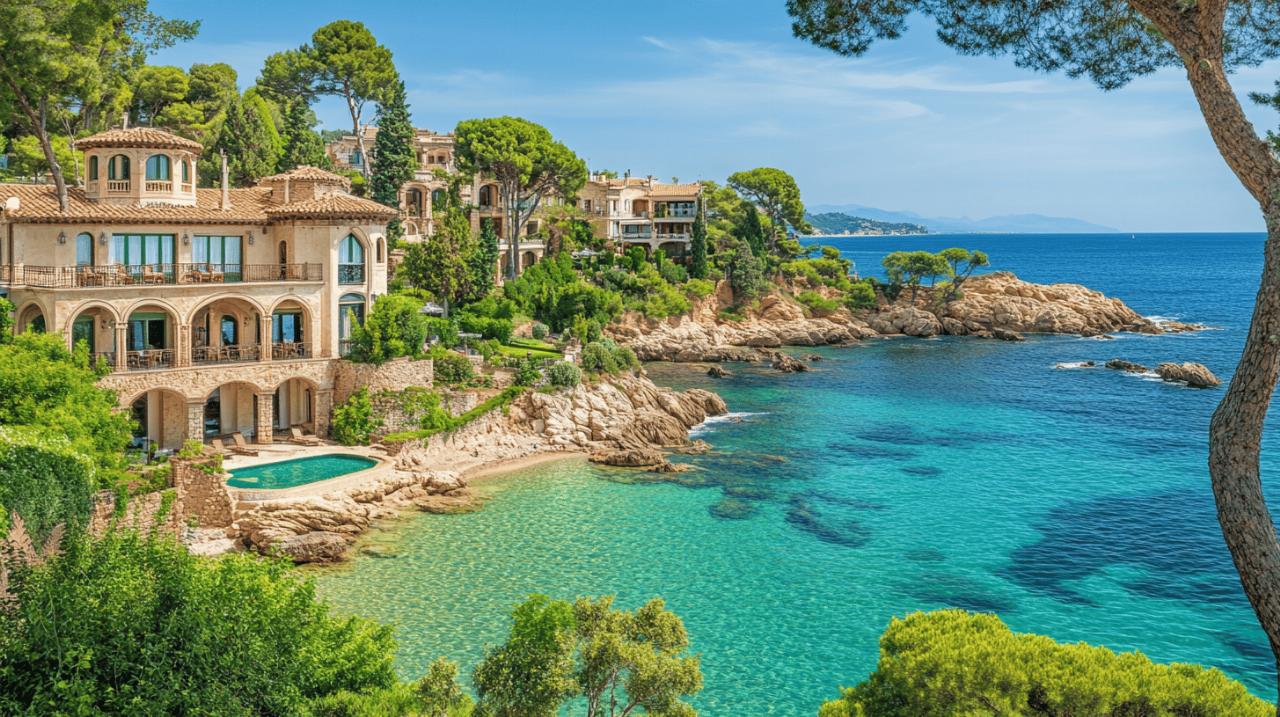Brittany's southern coast remains one of France's most enchanting yet understated treasures, where rugged granite cliffs meet sheltered sandy coves and ancient fishing ports continue their timeless routines. Amidst this captivating landscape, Pointe de Trévignon emerges as a remarkable destination that deserves far more recognition than it currently receives, offering visitors an authentic slice of coastal life away from the crowds that descend upon more famous stretches of the Breton shoreline.
Discovering Pointe de Trévignon's Coastal Splendour and Natural Beauty
The Stunning Beaches and Picturesque Port of Trévignon
The coastline surrounding Pointe de Trévignon presents an impressive tapestry of white sand beaches stretching along an extensive shoreline that invites exploration at every turn. The beaches here possess a distinctive character that sets them apart from their counterparts elsewhere in Brittany, with crystal-clear waters lapping against fine sand that remains remarkably pristine even during busier periods. Trévignon harbour itself captures the essence of a working fishing port, where a charming green-and-white lighthouse constructed in 1924 stands sentinel over vessels that venture out daily into the Atlantic. During summer months, visitors can witness the authentic rhythm of coastal life as fishermen return with their catches around five in the afternoon, offering the freshest seafood imaginable directly from boat to buyer. The port's restaurants serve up magnificent crêpes and locally caught lobster, providing sustenance with spectacular views across the water. Access to this coastal paradise proves straightforward via departmental roads from Trégunc, with a generous car park welcoming visitors free of charge, though arriving earlier in the day during peak season ensures securing a space from which to begin your coastal adventure.
Exploring the Dramatic Coastlines and Coastal Path Wildlife
The protected natural site status bestowed upon Pointe de Trévignon by the Conservatoire du Littoral has preserved its remarkable ecological diversity, encompassing an impressive six-kilometre belt of coastal dunes interspersed with tranquil ponds that create vital habitats for countless species. The Loc'h Coziou nature reserve has become particularly renowned among ornithologists and casual birdwatchers alike, supporting populations of over one hundred and fifty bird species throughout the year. This three-hundred-hectare ornithological reserve provides sanctuary for both resident populations and migratory visitors, making any season rewarding for those who arrive with binoculars and patience. The famous GR34 customs path threads its way through this landscape, offering walkers the opportunity to traverse twenty-three kilometres of coastal trails that reveal new vistas at every headland. A popular circular walking route of approximately six to seven kilometres takes roughly ninety minutes at a leisurely pace, though more ambitious ramblers might venture on the nearly thirteen-kilometre trek to Tahiti beach, which rewards the extra effort with its particularly stunning setting. The coastal path provides constant companionship with the Atlantic, where granite rocks sculpted by millennia of waves create dramatic formations, whilst the ever-changing light transforms the seascape throughout the day, culminating in sunsets that have inspired countless photographs yet somehow remain impossible to truly capture.
Brilliant Day Trips and Nearby Attractions Around Pointe de Trévignon
Charming Breton Villages: From Trégunc to Pont-Aven and Locronan
The villages surrounding Pointe de Trévignon offer immersive experiences in traditional Breton culture that transport visitors back through centuries of history and heritage. Trégunc itself serves as an ideal base for exploration, providing essential services whilst retaining authentic village character that larger resort towns have often sacrificed to tourism. The nearby hamlets of Kercanic and Kerascoet showcase exquisite thatched cottages that exemplify traditional Breton architecture, their thick stone walls and distinctive roofing materials speaking to generations of adaptation to the coastal climate. Standing stones known locally as Mein Zao dot the landscape between Névez and Trégunc, these ancient monuments certified as Landscapes of Reconquest in 1993 connecting modern visitors with prehistoric inhabitants who found this coastline equally compelling. The artistic heritage of the region finds its fullest expression in Pont-Aven, where the legacy of painters who gathered here continues to inspire contemporary artists, whilst the galleries and studios lining its streets offer opportunities to acquire unique pieces. Further inland, Locronan stands as one of France's officially designated most beautiful villages, its perfectly preserved medieval square and Renaissance architecture creating an atmosphere so authentic that film-makers regularly choose it as a location for period productions.
Island Escapes and the Glénan Archipelago's Caribbean Waters
Boat excursions from Pointe de Trévignon and nearby ports provide access to the Glénan archipelago, a collection of islands whose turquoise waters have earned comparisons to tropical destinations despite their decidedly Breton latitude. The clarity of the sea surrounding these islands creates an almost surreal quality, with white sand beaches fringing granite outcrops in combinations that seem borrowed from entirely different climatic zones. Day trips allow visitors to explore this maritime paradise, where opportunities for swimming, snorkelling, and simply absorbing the extraordinary scenery fill hours that pass far too quickly. The walled city of Concarneau presents another compelling destination within easy reach, its medieval fortifications enclosing narrow streets packed with shops, restaurants, and maritime museums that chronicle centuries of fishing tradition. Port-Manech offers yet another variation on the coastal theme, its sheltered position creating conditions particularly favourable for water sports including windsurfing, kayaking, and surfing, which attract enthusiasts throughout warmer months. The Crozon peninsula stretches westward, its dramatic landscapes encompassing everything from sheltered beaches to windswept headlands, whilst the Pointe du Raz and the Île de Sein represent the ultimate expressions of Brittany's wild coastal character.
Outdoor adventures in finistère: the armorique regional natural park
Hiking and Cycling Trails with Breathtaking Brittany Views
 The Armorique Regional Natural Park provides a magnificent backdrop for outdoor pursuits, its protected landscapes encompassing coastal sections, inland forests, and everything between in a showcase of Finistère's ecological diversity. Hiking opportunities extend well beyond the coastal paths, with trails penetrating into Kergunus wood where granite rocks weathered into animal-like shapes create a natural sculpture park that delights children and adults equally. Cycling infrastructure has developed considerably in recent years, with dedicated bike lanes connecting many destinations and allowing visitors to explore the region whilst minimising their environmental impact. The relatively gentle topography of much of the area makes cycling accessible to families and casual riders, though those seeking more challenging terrain can find it in the hillier sections further inland. Walking remains perhaps the most rewarding way to truly appreciate the landscape, allowing time to notice details that pass in a blur from vehicles or even bicycles. The Dunes and Ponds of Trévignon nature conservation area exemplifies the region's commitment to preserving its natural heritage, balancing public access with protection of sensitive habitats through carefully designed paths and viewing areas.
The Armorique Regional Natural Park provides a magnificent backdrop for outdoor pursuits, its protected landscapes encompassing coastal sections, inland forests, and everything between in a showcase of Finistère's ecological diversity. Hiking opportunities extend well beyond the coastal paths, with trails penetrating into Kergunus wood where granite rocks weathered into animal-like shapes create a natural sculpture park that delights children and adults equally. Cycling infrastructure has developed considerably in recent years, with dedicated bike lanes connecting many destinations and allowing visitors to explore the region whilst minimising their environmental impact. The relatively gentle topography of much of the area makes cycling accessible to families and casual riders, though those seeking more challenging terrain can find it in the hillier sections further inland. Walking remains perhaps the most rewarding way to truly appreciate the landscape, allowing time to notice details that pass in a blur from vehicles or even bicycles. The Dunes and Ponds of Trévignon nature conservation area exemplifies the region's commitment to preserving its natural heritage, balancing public access with protection of sensitive habitats through carefully designed paths and viewing areas.
Birdwatching and Wildlife Spotting Along the Crozon Peninsula
The Crozon peninsula extends its dramatic profile into the Atlantic, creating diverse habitats that support remarkable wildlife populations throughout the year. Birdwatchers find particular satisfaction here, as the varied terrain attracts species that might otherwise require visits to multiple locations, from seabirds nesting on cliff faces to waders probing tidal mudflats and songbirds inhabiting scrubland and woodland edges. The ringed plover, with its distinctive markings and endearing behaviour, represents just one of many species that breeding or visiting the area, whilst raptors patrol the skies searching for unwary prey below. Marine mammals occasionally make appearances offshore, with dolphins and porpoises sometimes visible from headlands on calmer days, their presence adding an extra dimension to coastal walks. The changing seasons bring different wildlife spectacles, from spring migrations and breeding activity through summer abundance to autumn movements and winter concentrations of hardy species that remain throughout colder months. Photography enthusiasts find endless subjects, whether capturing the grace of birds in flight, the intricate details of coastal wildflowers, or the interplay of light and landscape that makes Brittany so visually compelling across all seasons.
Where to Stay Near Pointe de Trévignon: Accommodation in Brittany's Hidden Gem
Quimper and Concarneau: Convenient Bases for Your Coastal Retreat
Selecting appropriate accommodation forms an essential element of any successful visit to Pointe de Trévignon, with options ranging from bustling towns offering full amenities to intimate establishments emphasising personal service and local character. Quimper, as Finistère's prefecture, provides comprehensive facilities including cultural attractions, restaurants representing various cuisines, and shopping opportunities that might prove welcome after days spent in more remote coastal locations. Its position makes day trips to Pointe de Trévignon entirely feasible whilst providing urban comforts for those who prefer not staying in smaller settlements. Concarneau offers a middle ground, its walled old town preserving historic atmosphere whilst the newer districts provide modern conveniences, and its proximity to the coast means seafood restaurants here serve catches that were swimming just hours before reaching your plate. The town's maritime museums and active fishing industry provide entertainment beyond beaches and walks, making it particularly suitable for longer stays where variety becomes increasingly important.
Local Guesthouses and Holiday Rentals for an Authentic Breton Experience
Holiday rentals scattered throughout villages surrounding Pointe de Trévignon allow visitors to establish temporary residence in the heart of coastal communities, shopping at local markets and preparing meals with regional ingredients in a manner that hotels simply cannot replicate. These properties range from converted fishermen's cottages to purpose-built modern homes, with nightly rates generally falling between two hundred and three hundred pounds depending on size, location, and season. Establishments such as Naeco offer distinctive accommodations in multiple Breton locations including Le Pouldu, positioned roughly forty-five minutes from Pointe de Trévignon and providing options for groups, private events, and business requirements alongside leisure travellers. Traditional guesthouses operated by local families provide insights into Breton life that prove impossible to gain from standard tourist accommodation, with hosts often sharing recommendations for hidden beaches, outstanding restaurants, and timing visits to coincide with local festivals. The Chapel of Saint-Philibert, dating from the sixteenth century, and the privately owned Château de Trévignon, representing one of Brittany's oldest castles in Gothic style, stand as reminders that this region's appeal extends far beyond natural beauty to encompass centuries of human history that continues shaping the landscape and communities today.

